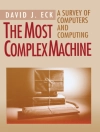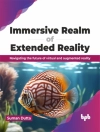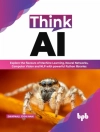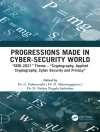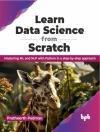SWARM INTELLIGENCE
This important authored book presents valuable new insights by exploring the boundaries shared by cognitive science, social psychology, artificial life, artificial intelligence, and evolutionary computation by applying these insights to solving complex engineering problems.
Motivated by the capability of the biologically inspired algorithms, “Swarm Intelligence: An Approach from Natural to Artificial” focuses on ant, cat, crow, elephant, grasshopper, water wave and whale optimization, swarm cyborg and particle swarm optimization, and presents recent developments and applications concerning optimization with swarm intelligence techniques. The goal of the book is to offer a wide spectrum of sample works developed in leading research throughout the world about innovative methodologies of swarm intelligence and foundations of engineering swarm intelligent systems; as well as applications and interesting experiences using particle swarm optimization, which is at the heart of computational intelligence.
Discussed in the book are applications of various swarm intelligence models to operational planning of energy plants, modeling, and control of robots, organic computing, techniques of cloud services, bioinspired optimization, routing protocols for next-generation networks inspired by collective behaviors of insect societies and cybernetic organisms.
Audience
The book is directed to researchers, practicing engineers, and students in computational intelligence who are interested in enhancing their knowledge of techniques and swarm intelligence.
Mục lục
Preface xi
1 Introduction of Swarm Intelligence 1
1.1 Introduction to Swarm Behavior 1
1.1.1 Individual vs. Collective Behaviors 1
1.2 Concepts of Swarm Intelligence 2
1.3 Particle Swarm Optimization (PSO) 2
1.3.1 Main Concept of PSO 3
1.4 Meaning of Swarm Intelligence 3
1.5 What Is Swarm Intelligence? 4
1.5.1 Types of Communication Between Swarm Agents 4
1.5.2 Examples of Swarm Intelligence 4
1.6 History of Swarm Intelligence 5
1.7 Taxonomy of Swarm Intelligence 6
1.8 Properties of Swarm Intelligence 10
1.8.1 Models of Swarm Behavior 11
1.8.2 Self-Propelled Particles 11
1.9 Design Patterns in Cyborg Swarm 12
1.9.1 Design Pattern Creation 14
1.9.2 Design Pattern Primitives and Their Representation 16
1.10 Design Patterns Updating in Cyborg 19
1.10.1 Behaviors and Data Structures 20
1.10.2 Basics of Cyborg Swarming 20
1.10.3 Information Exchange at Worksites 21
1.10.4 Information Exchange Center 22
1.10.5 Working Features of Cyborg 23
1.10.6 Highest Utility of Cyborg 24
1.10.7 Gain Extra Reward 25
1.11 Property of Design Cyborg 25
1.12 Extending the Design of Cyborg 31
1.12.1 Information Storage in Cyborg 32
1.12.2 Information Exchange Any Time 34
1.12.3 The New Design Pattern Rules in Cyborg 34
1.13 Bee-Inspired Cyborg 35
1.14 Conclusion 36
2 Foundation of Swarm Intelligence 37
2.1 Introduction 37
2.2 Concepts of Life and Intelligence 38
2.2.1 Intelligence: Good Minds in People and Machines 40
2.2.2 Intelligence in People: The Boring Criterion 41
2.2.3 Intelligence in Machines: The Turing Criterion 42
2.3 Symbols, Connections, and Optimization by Trial and Error 43
2.3.1 Problem Solving and Optimization 43
2.3.2 A Super-Simple Optimization Problem 44
2.3.3 Three Spaces of Optimization 45
2.3.4 High-Dimensional Cognitive Space and Word Meanings 46
2.4 The Social Organism 49
2.4.1 Flocks, Herds, Schools and Swarms: Social Behavior as Optimization 50
2.4.2 Accomplishments of the Social Insects 51
2.4.3 Optimizing with Simulated Ants: Computational Swarm Intelligence 52
2.5 Evolutionary Computation Theory and Paradigms 54
2.5.1 The Four Areas of Evolutionary Computation 54
2.5.2 Evolutionary Computation Overview 57
2.5.3 Evolutionary Computing Technologies 57
2.6 Humans – Actual, Imagined, and Implied 58
2.6.1 The Fall of the Behaviorist Empire 59
2.7 Thinking is Social 61
2.7.1 Adaptation on Three Levels 62
2.8 Conclusion 62
3 The Particle Swarm and Collective Intelligence 65
3.1 The Particle Swarm and Collective Intelligence 65
3.1.1 Socio-Cognitive Underpinnings: Evaluate, Compare, and Imitate 66
3.1.2 A Model of Binary Decision 68
3.1.3 The Particle Swarm in Continuous Numbers 70
3.1.4 Pseudocode for Particle Swarm Optimization in Continuous Numbers 71
3.2 Variations and Comparisons 72
3.2.1 Variations of the Particle Swarm Paradigm 72
3.2.2 Parameter Selection 72
3.2.3 Vmax 72
3.2.4 Controlling the Explosion 73
3.2.5 Simplest Constriction 73
3.2.6 Neighborhood Topology 74
3.2.7 Sociometric of the Particle Swarm 74
3.2.8 Selection and Self-Organization 76
3.2.9 Ergodicity: Where Can It Go from Here? 77
3.2.10 Convergence of Evolutionary Computation and Particle Swarms 78
3.3 Implications and Speculations 78
3.3.1 Assertions in Cuckoo Search 79
3.3.2 Particle Swarms Are a Valuable Soft Intelligence (Machine Learning Intelligent) Approach 80
3.3.3 Information and Motivation 82
3.3.4 Vicarious vs. Direct Experience 83
3.3.5 The Spread of Influence 83
3.3.6 Machine Adaptation 84
3.3.7 Learning or Adaptation? 85
3.4 Conclusion 86
4 Algorithm of Swarm Intelligence 89
4.1 Introduction 89
4.1.1 Methods for Alternate Stages of Model Parameter Reform 90
4.1.2 Ant Behavior 90
4.2 Ant Colony Algorithm 92
4.3 Artificial Bee Colony Optimization 95
4.3.1 The Artificial Bee Colony 96
4.4 Cat Swarm Optimization 98
4.4.1 Original CSO Algorithm 98
4.4.2 Description of the Global Version of CSO Algorithm 100
4.4.3 Seeking Mode (Resting) 100
4.4.4 Tracing Mode (Movement) 101
4.4.5 Description of the Local Version of CSO Algorithm 101
4.5 Crow Search Optimization 103
4.5.1 Original CSA 104
4.6 Elephant Intelligent Behavior 105
4.6.1 Elephant Herding Optimization 107
4.6.2 Position Update of Elephants in a Clan 108
4.6.3 Pseudocode of EHO Flowchart 109
4.7 Grasshopper Optimization 109
4.7.1 Description of the Grasshopper Optimization Algorithm 111
4.8 Conclusion 112
5 Novel Swarm Intelligence Optimization Algorithm (SIOA) 113
5.1 Water Wave Optimization 113
5.1.1 Objective Function 115
5.1.2 Power Balance Constraints 115
5.1.3 Generator Capacity Constraints 116
5.1.4 Water Wave Optimization Algorithm 116
5.1.5 Mathematical Model of WWO Algorithm 117
5.1.6 Implementation of WWO Algorithm for ELD Problem 118
5.2 Brain Storm Optimization 119
5.2.1 Multi-Objective Brain Storm Optimization Algorithm 120
5.2.2 Clustering Strategy 120
5.2.3 Generation Process 121
5.2.4 Mutation Operator 122
5.2.5 Selection Operator 122
5.2.6 Global Archive 123
5.3 Whale Optimization Algorithm 123
5.3.1 Description of the WOA 124
5.4 Conclusion 125
6 Swarm Cyborg 127
6.1 Introduction 127
6.1.1 Swarm Intelligence Cyborg 129
6.2 Swarm Cyborg Taxis Algorithms 132
6.2.1 Cyborg Alpha Algorithm 135
6.2.2 Cyborg Beta Algorithm 136
6.2.3 Cyborg Gamma Algorithm 138
6.3 Swarm Intelligence Approaches to Swarm Cyborg 139
6.4 Swarm Cyborg Applications 140
6.4.1 Challenges and Issues 145
6.5 Conclusion 146
7 Immune-Inspired Swarm Cybernetic Systems 149
7.1 Introduction 149
7.1.1 Understanding the Problem Domain in Swarm Cybernetic Systems 150
7.1.2 Applying Conceptual Framework in Developing Immune-Inspired Swarm Cybernetic Systems Solutions 151
7.2 Reflections on the Development of Immune-Inspired Solution for Swarm Cybernetic Systems 155
7.2.1 Reflections on the Cyborg Conceptual Framework 155
7.2.2 Immunology and Probes 157
7.2.3 Simplifying Computational Model and Algorithm Framework/Principle 158
7.2.4 Reflections on Swarm Cybernetic Systems 159
7.3 Cyborg Static Environment 161
7.4 Cyborg Swarm Performance 162
7.4.1 Solitary Cyborg Swarms 162
7.4.2 Local Cyborg Broadcasters 162
7.4.3 Cyborg Bee Swarms 163
7.4.4 The Performance of Swarm Cyborgs 163
7.5 Information Flow Analysis in Cyborgs 165
7.5.1 Cyborg Scouting Behavior 165
7.5.2 Information Gaining by Cyborg 166
7.5.3 Information Gain Rate of Cyborgs 169
7.5.4 Evaluation of Information Flow in Cyborgs 170
7.6 Cost Analysis of Cyborgs 170
7.6.1 The Cyborg Work Cycle 171
7.6.2 Uncertainty Cost of Cyborgs 172
7.6.3 Cyborg Opportunity Cost 175
7.6.4 Costs and Rewards Obtained by Cyborgs 176
7.7 Cyborg Swarm Environment 179
7.7.1 Cyborg Scouting Efficiency 179
7.7.2 Cyborg Information Gain Rate 180
7.7.3 Swarm Cyborg Costs 180
7.7.4 Solitary Swarm Cyborg Costs 181
7.7.5 Information-Cost-Reward Framework 181
7.8 Conclusion 183
8 Application of Swarm Intelligence 185
8.1 Swarm Intelligence Robotics 185
8.1.1 What is Swarm Robotics? 186
8.1.2 System-Level Properties 186
8.1.3 Coordination Mechanisms 187
8.2 An Agent-Based Approach to Self-Organized Production 189
8.2.1 Ingredients Model 190
8.3 Organic Computing and Swarm Intelligence 193
8.3.1 Organic Computing Systems 195
8.4 Swarm Intelligence Techniques for Cloud Services 197
8.4.1 Context 198
8.4.2 Model Formulation 198
8.4.3 Decision Variable 198
8.4.4 Objective Functions 199
8.4.5 Solution Evaluation 201
8.4.6 Genetic Algorithm (GA) 203
8.4.7 Particle Swarm Optimization (PSO) 204
8.4.8 Harmony Search (HS) 206
8.5 Routing Protocols for Next-Generation Networks Inspired by Collective Behaviors of Insect Societies 206
8.5.1 Classification Features of Network Routing Protocols 209
8.5.2 Nearest Neighbor Behavior in Ant Colonies and the ACO Metaheuristic to Network Routing Protocols Inspired by Insect Societies 213
8.5.3 Useful Ideas from Honeybee Colonies 214
8.5.4 Colony and Workers Recruitment Communications 215
8.5.5 Stochastic Food Site Selection 215
8.6 Swarm Intelligence in Data Mining 216
8.6.1 Steps of Knowledge Discovery 216
8.7 Swarm Intelligence and Knowledge Discovery 217
8.8 Ant Colony Optimization and Data Mining 221
8.9 Conclusion 222
References 223
Index 231
Giới thiệu về tác giả
Kuldeep Singh Kaswan, Ph D, is working in the School of Computing Science & Engineering, Galgotias University, Uttar Pradesh, India. He received his Ph D in computer science from Banasthali Vidyapith, Rajasthan, and D. Engg. from Dana Brain Health Institute, Iran. His research interests are in brain-computer interface, cyborg, and data sciences.
Jagjit Singh Dhatterwal, Ph D, is an associate professor in the Department of Artificial Intelligence & Data Science, Koneru Lakshmaiah Education Foundation, Vaddeswaram, AP, India. He completed his doctorate in computer science from Mewar University, Rajasthan, India. He has numerous publications in international/national journals and conferences.
Avadhesh Kumar, Ph D, is Pro Vice-Chancellor at Galgotias University, India. He obtained his doctorate in computer science with a specialization in software engineering from Thapar University, Patiala, Punjab. He has more than 22 years of teaching and research experience and has published more than 40 research papers in SCI international journals/conferences. His research areas are aspect-oriented programming (AOP), software metrics, software quality, component-based software development (CBSD), artificial intelligence, and autonomic computing.



